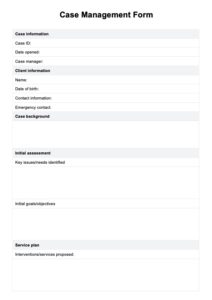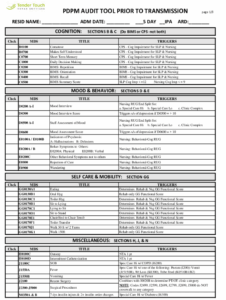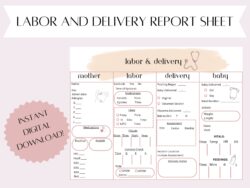Navigating the world of nurse case management can feel like juggling a million things at once. From coordinating care plans to communicating with patients and families, and ensuring everything is properly documented, it’s a demanding role. That’s where a good nurse case management documentation template comes in. Think of it as your trusty sidekick, helping you stay organized, compliant, and efficient, freeing you up to focus on what matters most: your patients.
Choosing the right template isn’t just about ticking boxes; it’s about creating a system that works for you and your specific needs. A well-designed template will guide you through the documentation process, ensuring you capture all the essential information, from initial assessments to ongoing progress notes and discharge planning. It’s about building a clear and comprehensive record of the patient’s journey, a record that’s easily accessible and understandable by everyone involved in their care.
In essence, a nurse case management documentation template provides a structured framework, offering consistency and clarity in recording patient information. This standard approach not only improves communication and collaboration among healthcare providers but also minimizes the risk of errors and omissions, ultimately leading to better patient outcomes. And let’s be honest, in a fast-paced environment, having a reliable template can be a real lifesaver.
Why is Comprehensive Documentation Crucial in Nurse Case Management?
Comprehensive documentation is the backbone of effective nurse case management. It’s not simply about filling out forms; it’s about creating a detailed narrative of the patient’s experience, their needs, and the interventions implemented to support their recovery or management of their condition. Without accurate and thorough documentation, it becomes incredibly difficult to track progress, identify potential problems, and make informed decisions about the patient’s care.
Imagine trying to piece together a patient’s history without complete records. Important details could be missed, leading to inconsistencies in care and potentially compromising patient safety. Good documentation ensures continuity of care, especially when multiple providers are involved. It allows everyone to be on the same page, working towards the same goals.
Furthermore, proper documentation serves as a legal record of the care provided. In the event of any legal challenges, the documentation serves as evidence of the actions taken and the rationale behind those actions. This is particularly important in today’s healthcare environment, where accountability and transparency are paramount.
Beyond legal protection, thorough documentation is essential for quality improvement initiatives. By analyzing the data collected through documentation, healthcare organizations can identify trends, pinpoint areas for improvement, and implement strategies to enhance the overall quality of care. It’s a vital tool for continuous learning and development.
Finally, think about the patients themselves. Clear and understandable documentation empowers patients to be more involved in their own care. When they can access their records and see the plan of care, they are more likely to understand their condition, adhere to treatment recommendations, and actively participate in their own healing journey. The use of a nurse case management documentation template ensures the data recorded is concise.
Key Elements to Include in Your Nurse Case Management Documentation Template
So, what should a comprehensive nurse case management documentation template actually include? While the specific elements may vary depending on the setting and the patient population, there are some key components that are essential for any effective template. These elements ensure a thorough and organized approach to documentation.
First and foremost, the template should include detailed patient demographics, including name, date of birth, contact information, and insurance details. This information is crucial for accurate identification and communication. Following demographics, there needs to be a section for initial assessment. This should encompass the patient’s medical history, current medications, functional status, psychosocial needs, and any relevant social determinants of health. This initial assessment lays the foundation for the entire case management plan.
Next, the template must have space for a clearly defined care plan. This should outline the goals of care, the interventions to be implemented, the responsible parties, and the expected outcomes. The care plan should be developed in collaboration with the patient and their family, ensuring that their preferences and values are taken into consideration. The template must provide a structured way to record these important components.
Progress notes are also a crucial part of the nurse case management documentation template. These notes should document the patient’s progress towards their goals, any changes in their condition, any interventions implemented, and the patient’s response to those interventions. Progress notes should be written in a clear, concise, and objective manner, avoiding jargon and subjective opinions.
Finally, the template should include a section for discharge planning. This should outline the patient’s needs upon discharge, the resources available to them, and the plan for follow-up care. Discharge planning should be initiated early in the case management process, ensuring a smooth transition for the patient back into their home and community. This ensures a safe and effective transition.
Effective nurse case management is a cornerstone of delivering optimal patient care. It is about more than just managing cases; it’s about fostering a holistic approach to healthcare, which prioritizes patient well-being.
The utilization of a well-structured and thoughtful approach to documenting patient interactions and progress is extremely essential.



